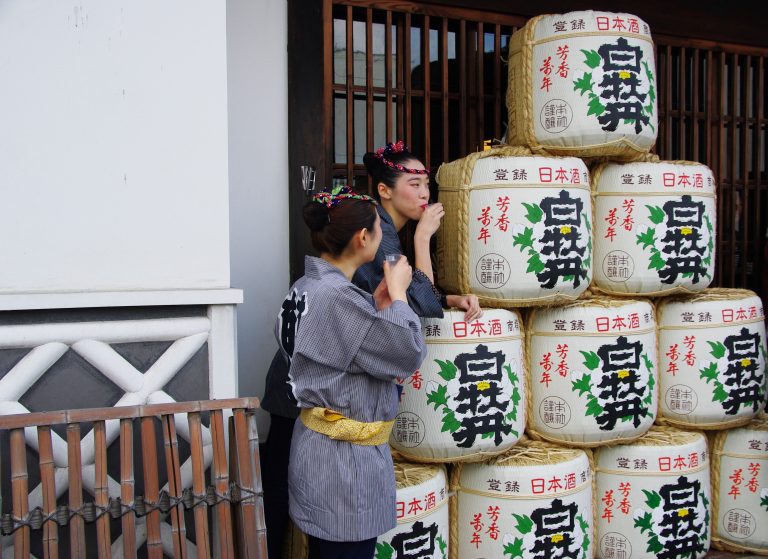100 Stories
Saijo – A Journey into the Spirit World of Sake
The eastern area of Hiroshima has a special place, where liquid magic is created. This place is called Saijo Sakagura Dori or Sake Storehouse Road. This area is a short train ride from Hiroshima Station and has been around for about 250 years. The residents of the Hiroshima area, as well as Japan proper are well aware of this place, and all the delicious tastes it offers.
Breweries
The Saijo area is very residential with both traditional Japanese buildings as well as apartments dotting the area up and down Sakagura Dori. It has the feel of both old and new. Along with the breweries, you will also find a bakery, chocolate shop, small cafes, and restaurants on both the Main Street and side streets.
The simplest way to get there is by train from Hiroshima Station. Just take the Sanyo Line about eight stops at a cost of about ¥590. The trains leave about every 30 minutes during the day. By bus it would take 1 hour and 30 minutes and cost about ¥1370. The option to drive is also available and the time takes about 30 minutes on the highway with tolls varying depending on where you enter. The Saijo area is usually open except on National holidays.
I would suggest using the train as the walk to the Sake breweries is only about two minute walk from the station. Once you exit the train at the turnstile, just turn right and go out the south exit and down the stairs. You will see a sushi restaurant In front of you; just follow the road and you will see a police box on your left (about 50 meters) and a small road just past that with an English language sign marking the distance to the breweries. If you go left down this street, you will see a small area on your left called Sakura Yokocho. This is an alley-type enclosure with about 7 or 8 eating/drinking establishments that serve alcohol (sake, beer, Shochu) and Japanese foods such as Oden, yakitori, and other types of food. It is only open at night.
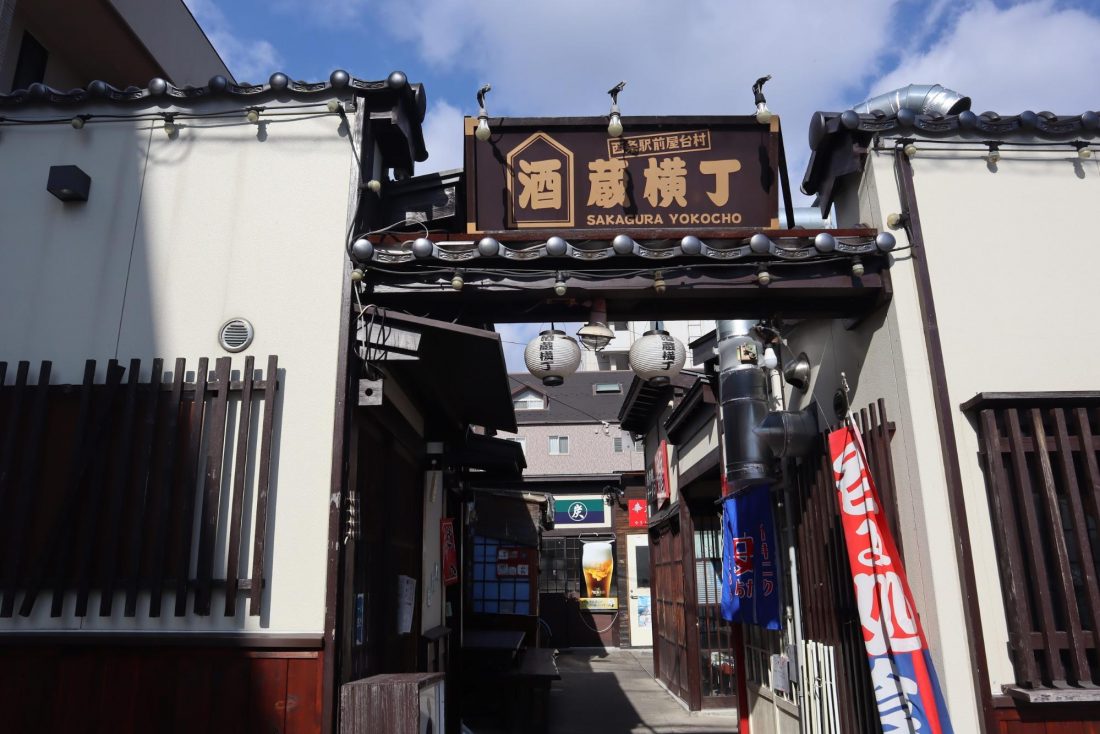
I would recommend that during the day, you continue on the main road and pass this street until you come to the main road just before a Lawson’s convenience store. This is Sakagura-Dori where all the main breweries are located. If you look up before you cross the street and there is an English sign on you left at the street entrance stating that the breweries are on this street; it also states that there is a tourist information center on the street. The street is no more than about 500 – 700 meters long, so there would not be much walking.
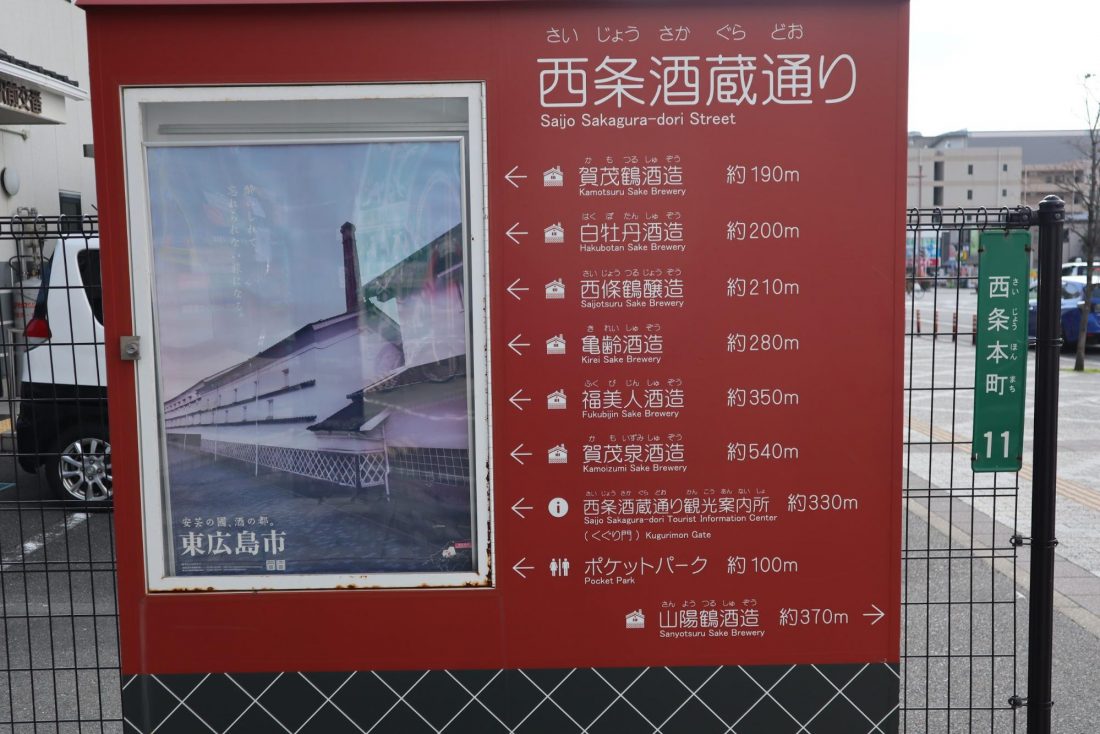
I first took a left turn onto Sakagura Dori and walked 150 to 200 meters and found the tourist information center on my right; it was clearly marked in English. The staff spoke limited English, but provided an excellent English language map and guide on how to find the breweries and tour the area. The information center also had various commodities for sale such as sake, sweets, books, t-shirts, etc.
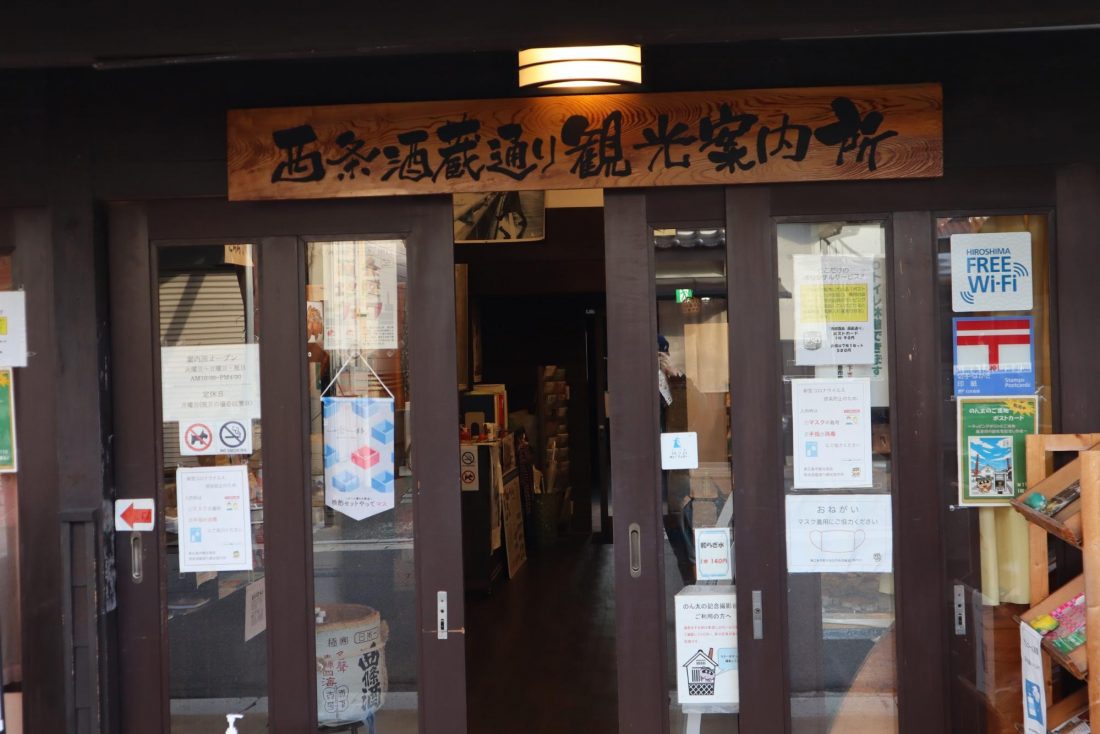
Per the guide map and info center staff member’s assistance , I learned that there are actually only seven breweries in the area. The Saijo website in English and Japanese(saijosake.com) lists eight (actually nine if you include Sakurafubuki which is 16 kilometers from Hiroshima but included on the website for some reason); but apparently Kamoki Brewery has gone out of business.
Once I procured my guide map, I exited the info center and headed left and back to the street entrance near the station since one of the breweries is located on the other side of Sakagura Street – it was called Sanyotsura. So I crossed to the other side of Sakaguchi Dori to find it.
If you walk about 150-200 meters down the street you will see Sanyotsura Brewery on you left. It is not large and the sign is small, but it was easy to find using the guide map. The staff there do not speak English, but in my limited Japanese I found out that tours and tasting are available. Reservations are encouraged and there is a small fee for tasting – depending on the Sake available. Usually about ¥100-¥200 per glass. Sake was for sale in the small shop at the entrance.
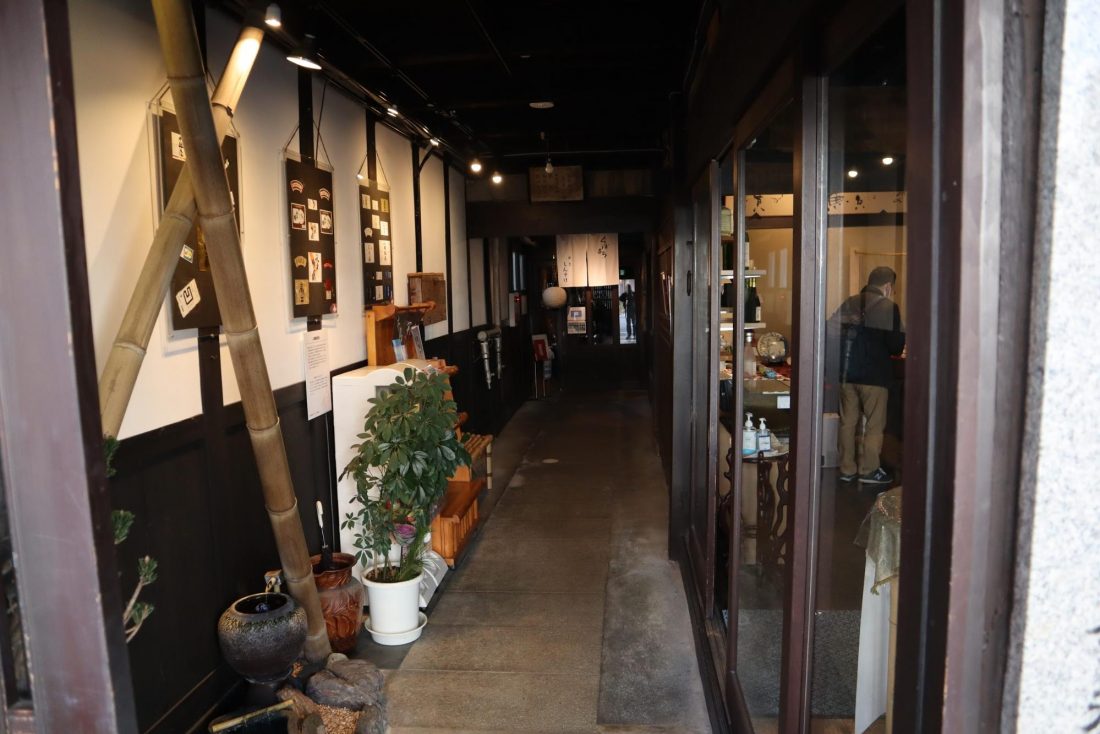
I crossed back to the other side of Sakagura-Dori and then proceeded back towards the information center and found Hakubotan Brewery on my right and just before the info center. Their tasting is free, usually only on Saturdays and Sundays with tours by reservation recommended. They also sell Sake in their gift shop.
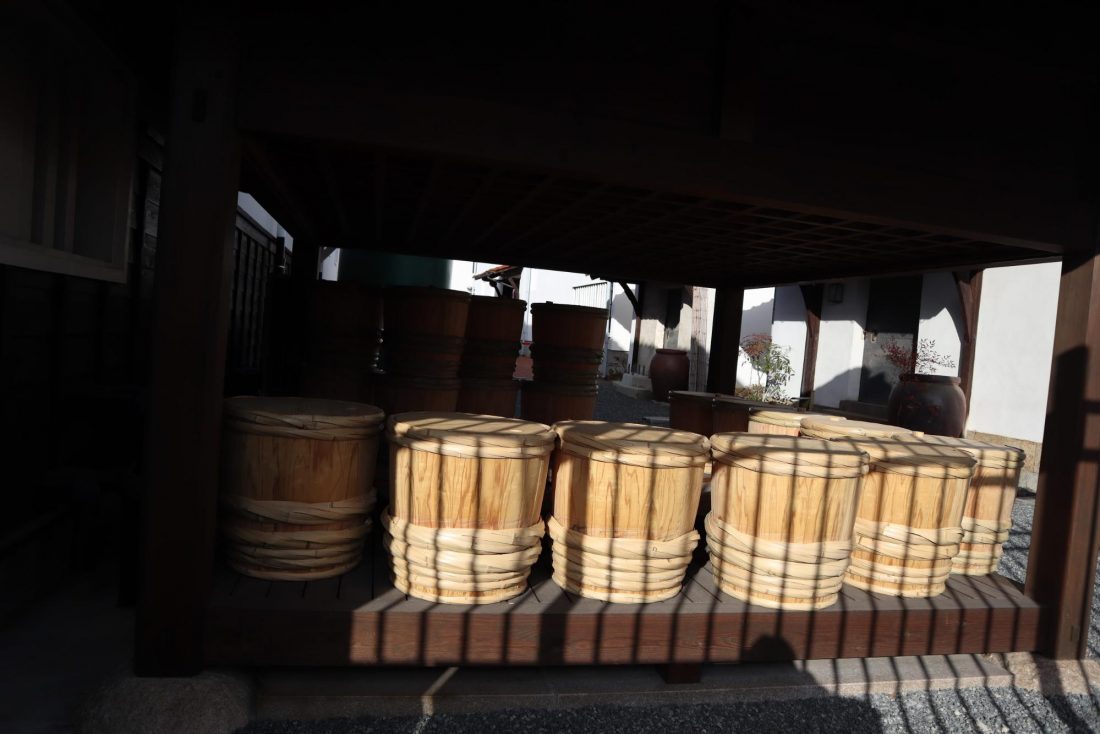
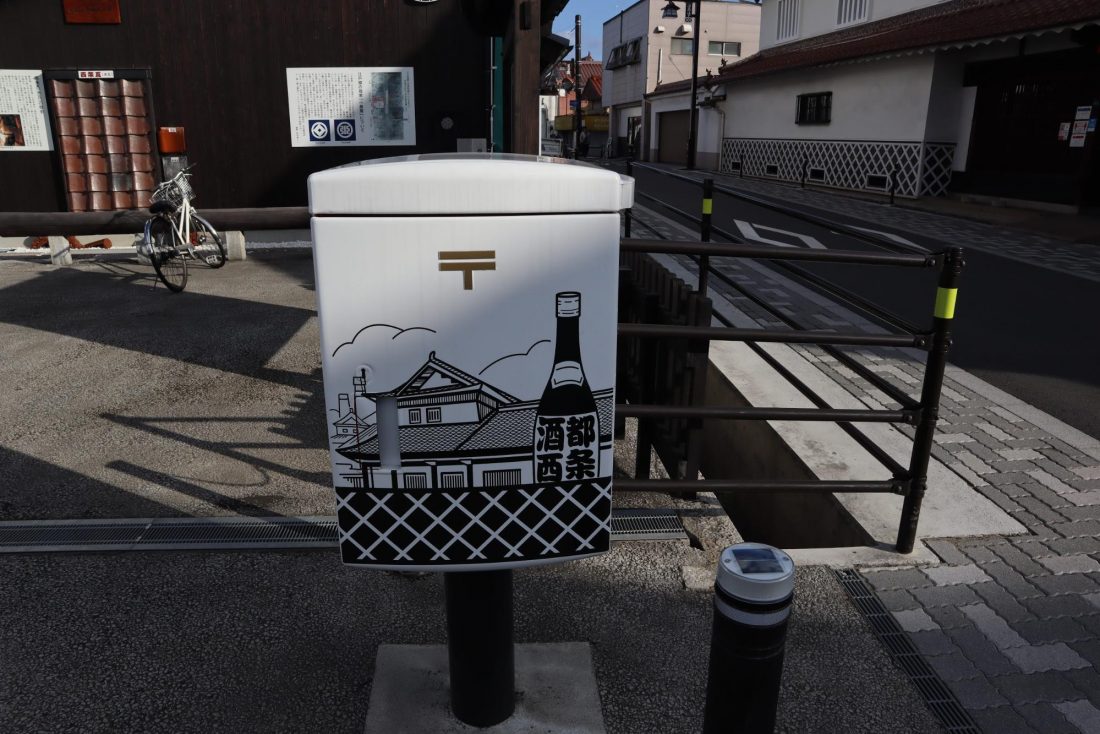
Directly across the road a few meters away was Saijotsuru Brewery. There were some English explanations of the Sake making process on the entrance walls with photos. Tasting is free and tours can be arranged.
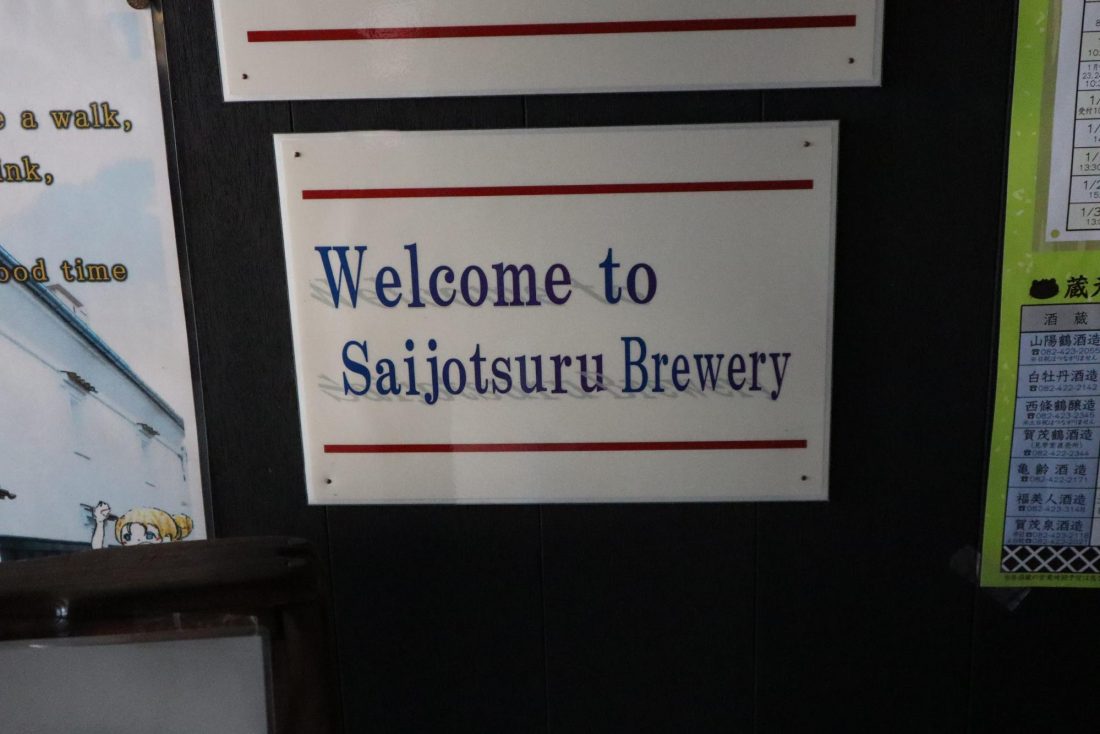
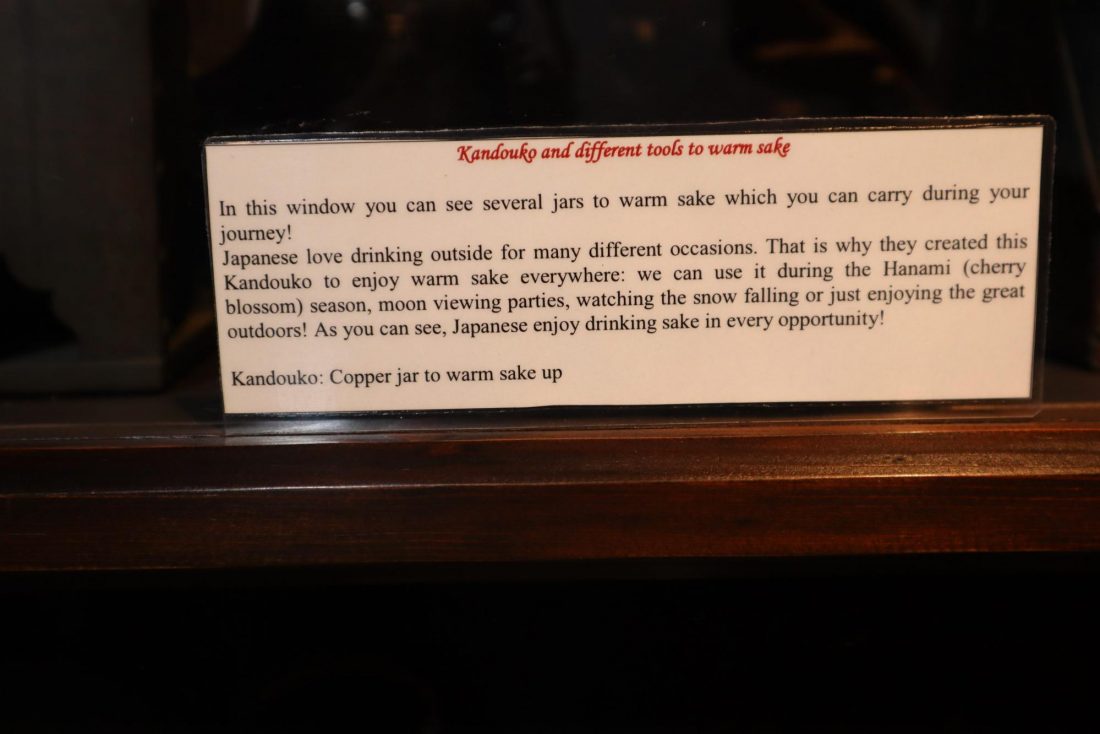
The fourth brewery was called Kamotsuru Brewery and was located on a side street just before the tourist info center. Take a left down the side street and continue past a large Japanese-style restaurant (it takes up most of the small street) on your left. At the end of the small side street (about 150 meters) go left and into the brewery itself. A free running water spigot is located on your right as you enter (feel free to load up you water bottle or cup – I saw plenty of locals do it). This brewery is well lighted and organized for tourists. It offers tours and tasting (at a small cost per the staff) of selected sake. They have English language photos on the wall and an English subtitled video playing continuously on the Sake making process. A nice gift shop with Sake sundries and a polite and friendly staff.
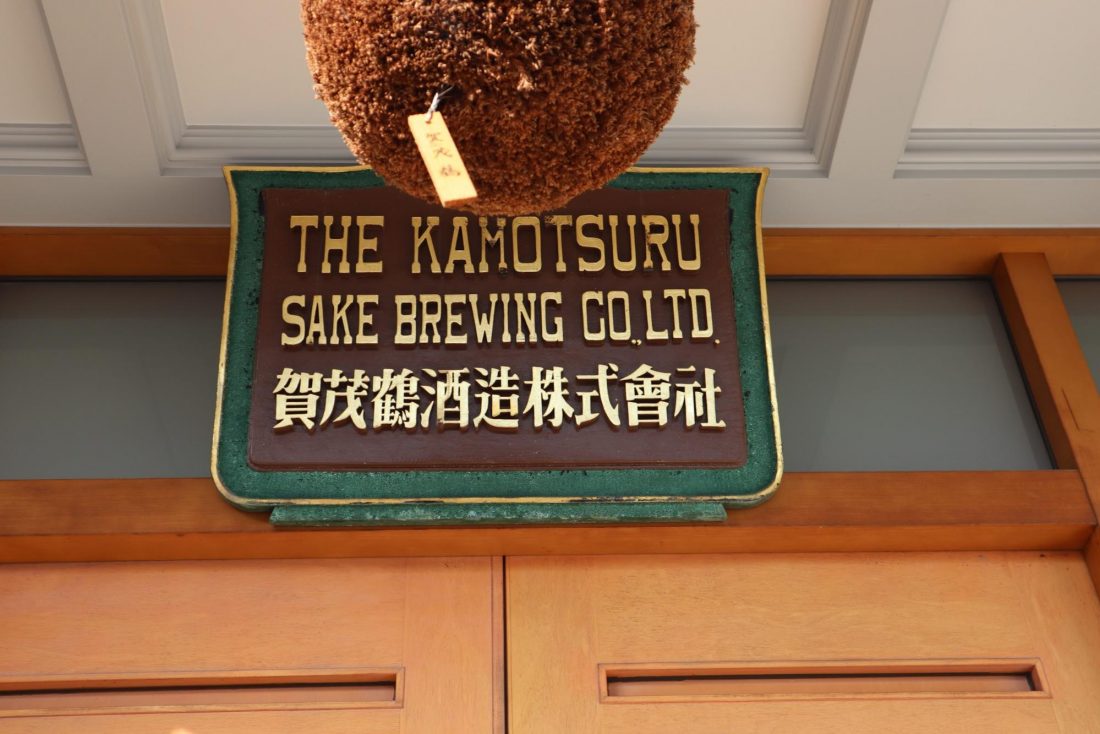
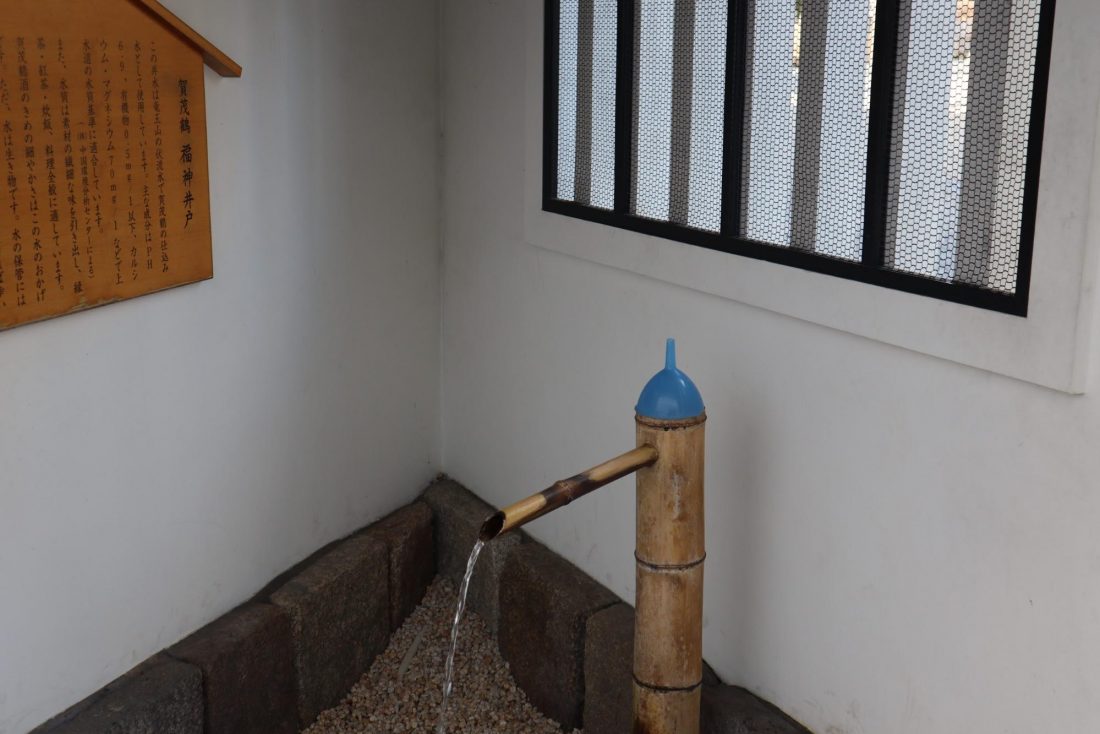
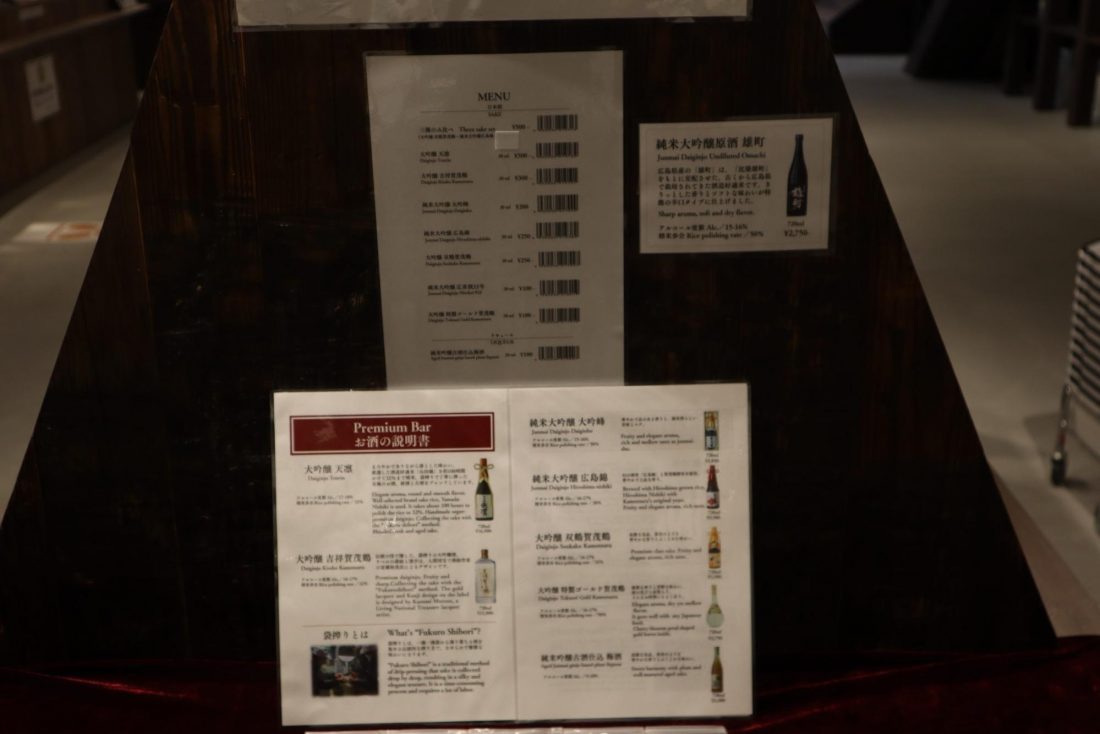
Going back to Sakagura Dori, I walked past the tourist info center and a few meters on my left was the Kirei Brewery. This set up was fairly simple: gift shop, Sake items for sale, and tasting for free. There was no English info available
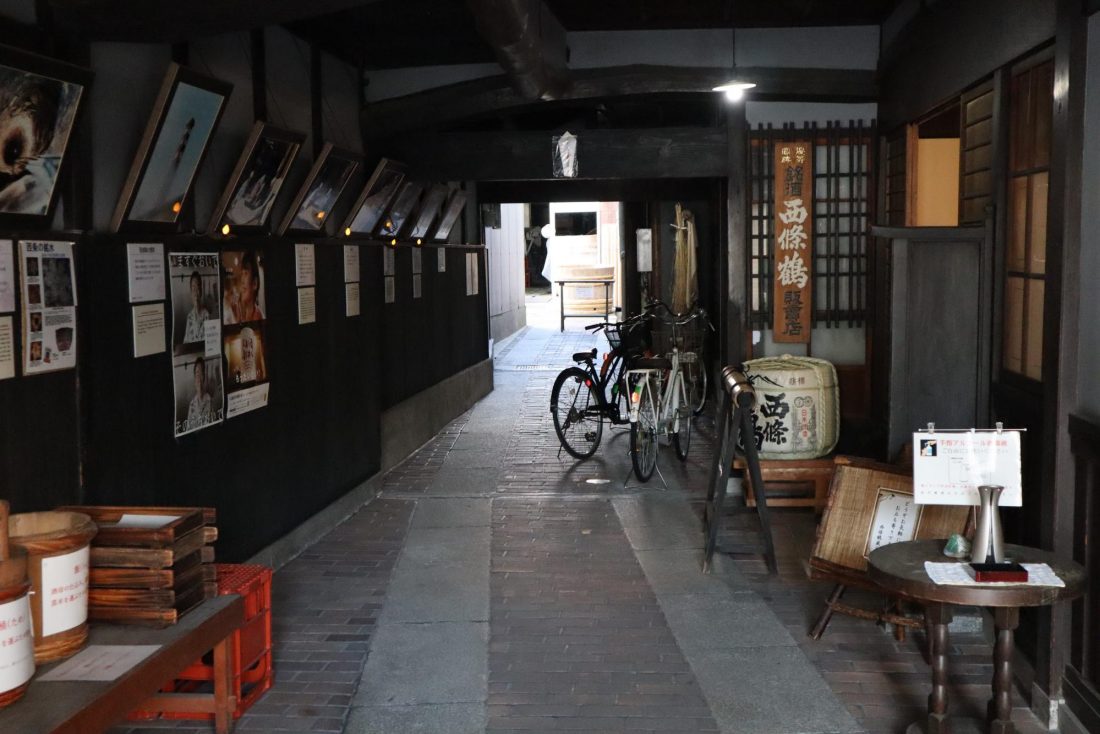
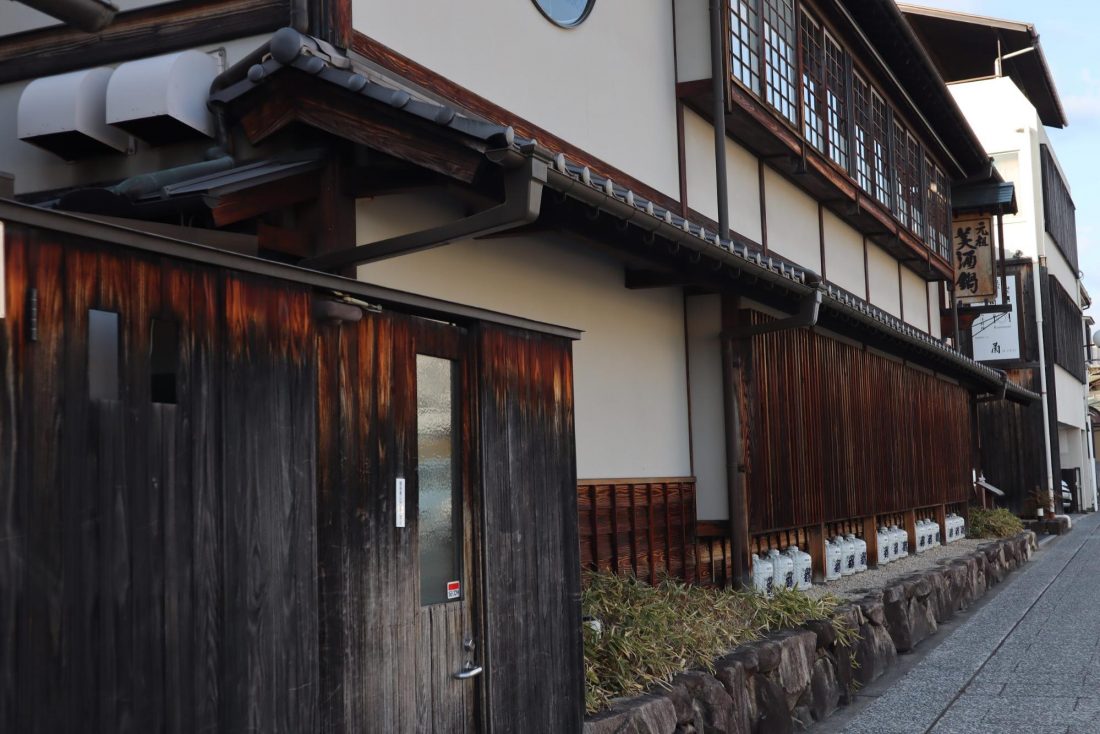
Sixth on the list and just further down the street you will take a left down a small side street to find Fukubijin Brewery. It had free tasting, arranged tours, a nice gift shop and large sake vats on display with an area spigot for running water. It was also clean and had some sake processing items on display for viewing.
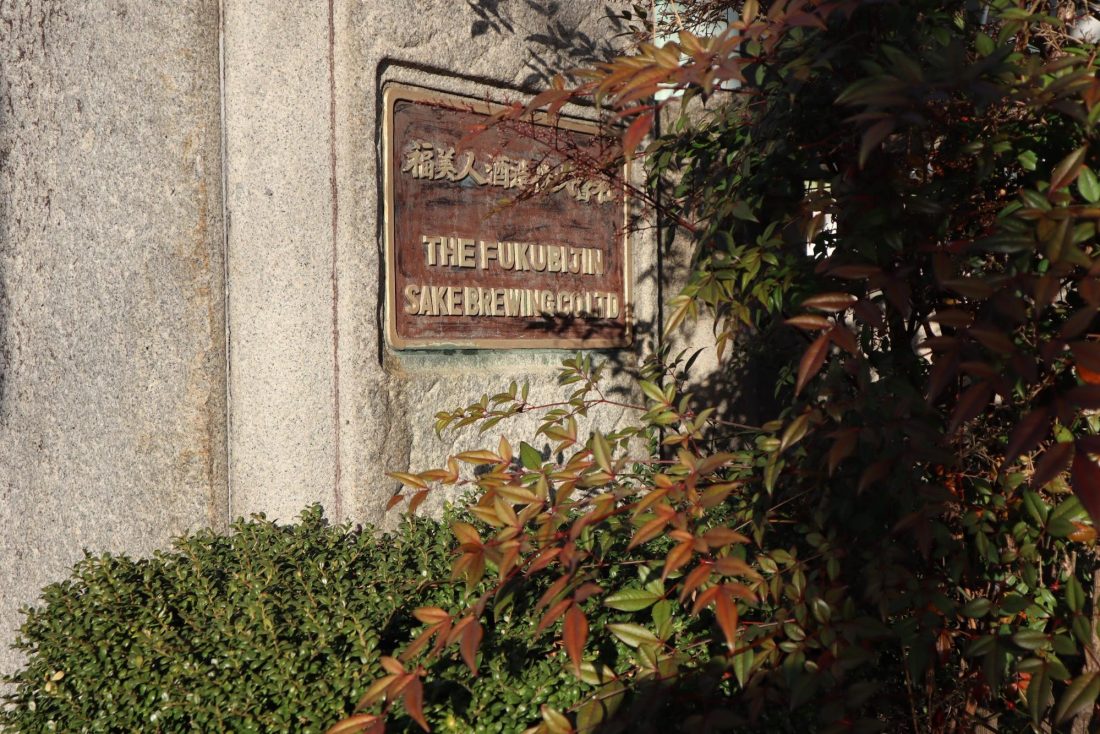
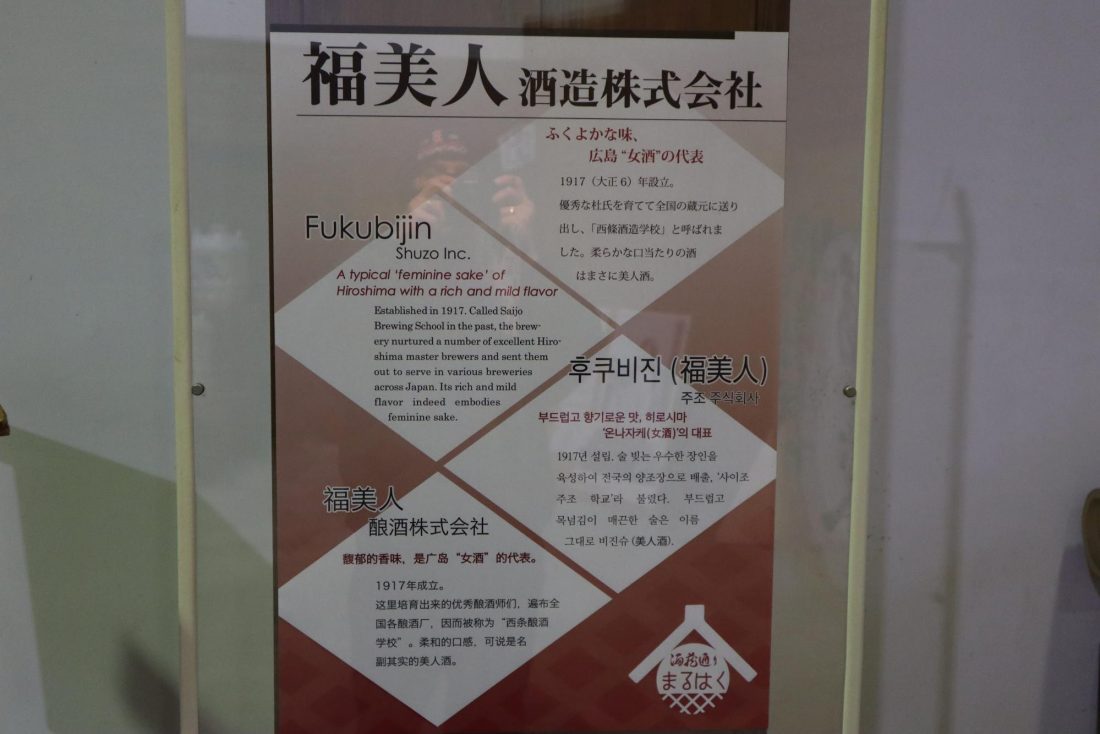

The final brewery was called Kamiizumi Brewery. They told me that limited English tours could be arranged, tasting was free, and they had Sake products for sale in their shop. They were located at the end of the street on the right side.
The whole walk took about 1.5 to 2 hours. Very little English was available at all the breweries. I spoke to the staff in Japanese, but they were cordial and friendly at most of the breweries. All breweries said that they see plenty of English speaking customers requesting, info, tours, and tasting. I would highly recommend bringing along a Japanese friend or family member to facilitate your visit. Or of course learn and use Japanese!

The Saijo area is very residential with both traditional Japanese buildings as well as apartments dotting the area up and down Sakagura Dori. It has the feel of both old and new. You will also find a bakery, chocolate, shop, and small cafes and restaurants on both the Main Street and side streets.
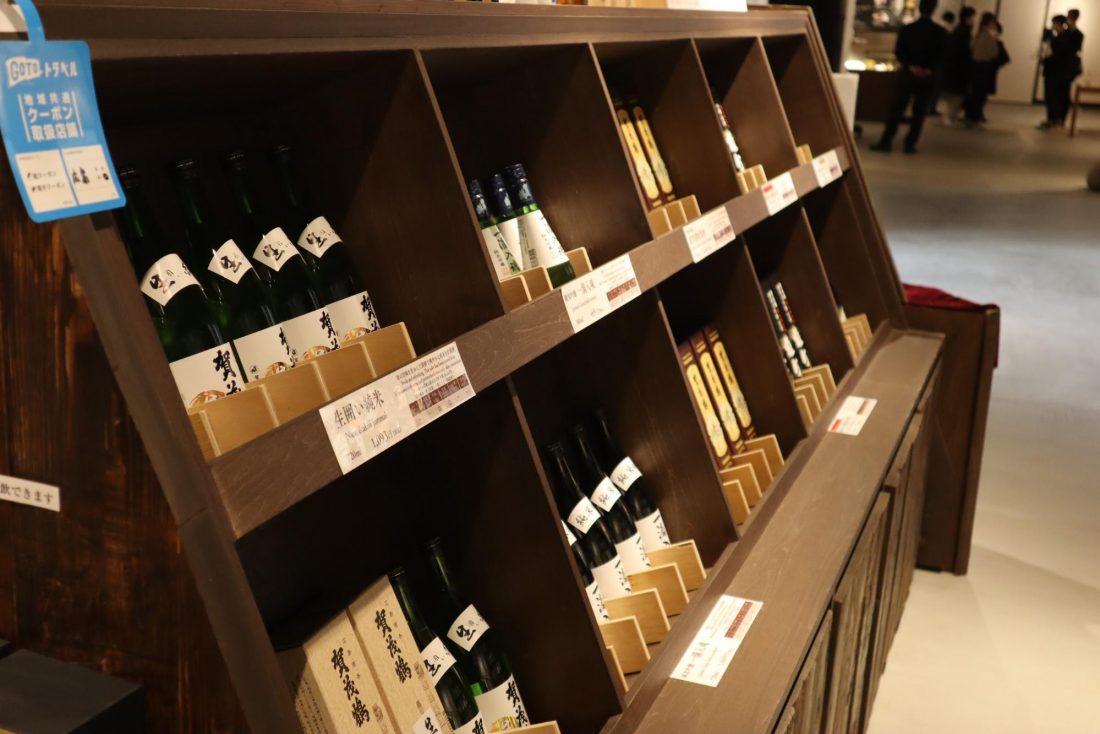
Moment of Joy
For me the best moment was entering Sakagura-Dori. It felt like entering back in time a few hundred years. The buildings were mostly old, wooden structures with a definite feel of a bygone samurai era. I have always wondered what it would be like to live in another era, and entering the street seemed like the next best thing. Saijo emanates so much history, that upon entering the street my emotions felt a surge of vintage and retro that brought a smile to my face.
Sake History
To better understand and enjoy the magic of Sakagura-Dori, I would like to introduce the basic world of sake to those unfamiliar with Japanese sake or nihonshu(sake in Japanese actually means alcohol and encompasses beer, wine, whiskey, etc.). It has been consumed and then brewed in the country for about 1500 to 2000 years. Prior to the start of the Sake brewing process, people chewed the rice, spit into a vat, and the saliva enzymes mixed with the natural yeast in the air helped to create the alcohol. Although known records are sketchy on sake brewing, the first known written record of sake was listed in the 8th century document called the Kojiki.
The actual brewing of sake supposedly began during the Nara period in the late 7th or early 8th century at the Imperial Palace in Nara, and then moved to Buddhist temples in the 14th century for religious rituals and ceremonies. It was not until the Meiji Period from the mid to late 19th century that sake brewing was opened for commercial brewing. It is believed that up to 30,000 breweries were opened during the Meiji era. Thus, sake has only really served commercial interests among the general public for about 150 years. The oldest known sake brewery in Japan is believed to be in Kyoto dated from the 15th century. It is now believed that there are somewhere between 1500 to 2000 breweries in Japan. Although nihonshu is tasty all over Japan (including Hiroshima), the areas of Hyogo, Kyoto, Nara, Akita ,Saga, and Niigata are considered prime locations for sake making.
Sake Making - Types and Characteristics
Sake is a type of rice wine using the ingredients of water (about 80%), rice, and a yeast mold called koji that turns rice starches into sugar. The creation process takes from 30 to 60 days, while the fermentation itself can take from 10 to 14 days. The rice used to make sake is a special type called sakamai and are longer grains than typical table rice.
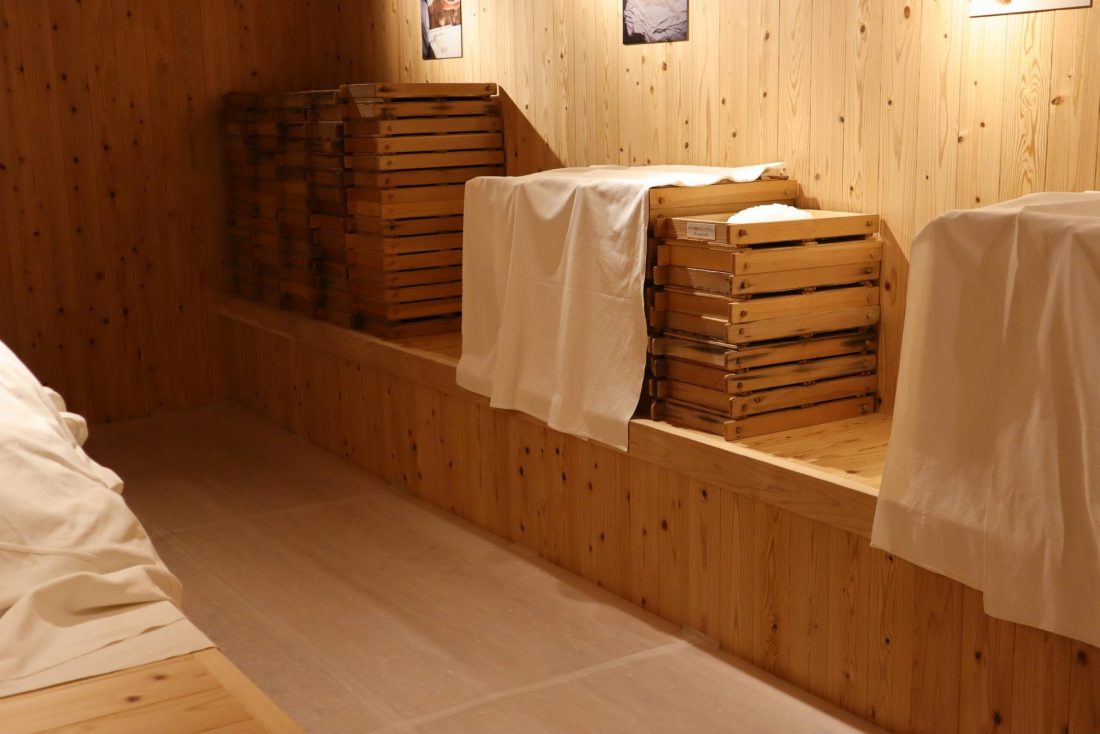
Prior to mixing the sake ingredients (water, rice, and Koji mold) the rice is “polished” or shaved to various degrees to remove portions of proteins, fats, and minerals that may cause unwanted flavors in the sake. This process is called seimaibuai and is a key factor in the actual taste of the drink. The polishing usually shaves anywhere from 30% to 50% of the husk. Basically, the more the percentage of the polishing the higher quality of the sake (i.e., if 50% is shaved, then the sake quality should be higher versus a shaved husk of only 30%). Some brewing alcohol may be added in the creation process to some sakes to improve taste, and some may only have pure ingredients of rice, water, and Koji.
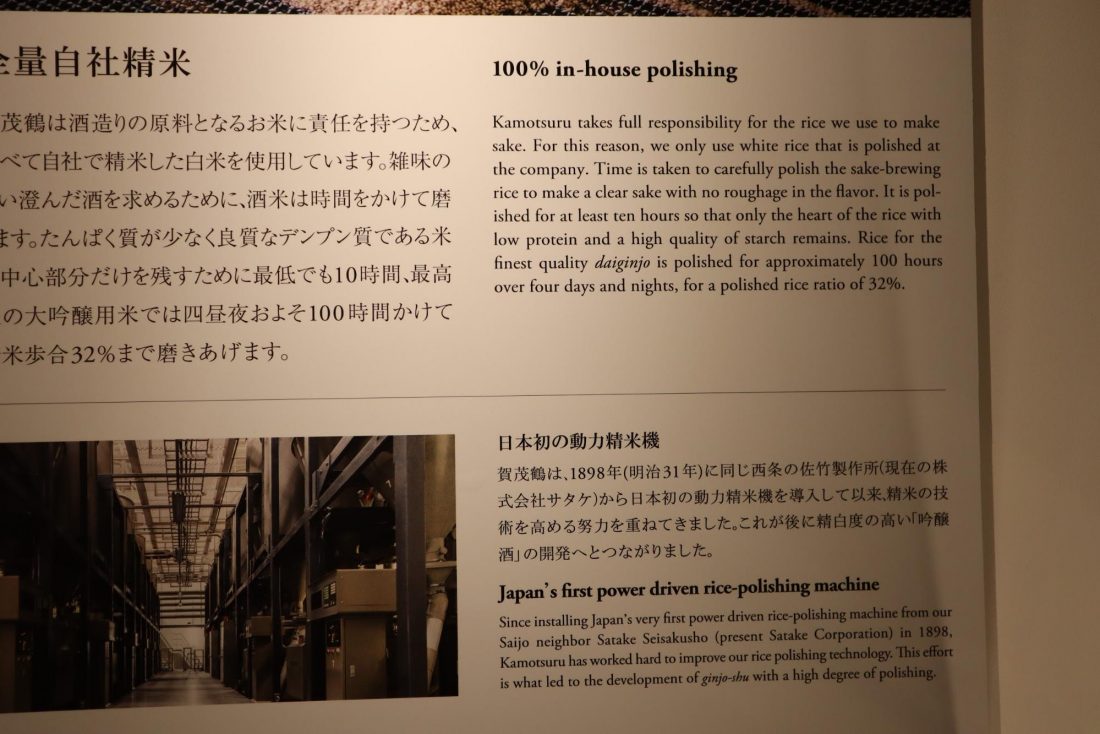
Sake alcohol content is usually around 15% but can be as much as 20%. Once the bottle is opened, you should drink in about 2 to 4 weeks. It should be stored in a cool, dry place, and for Ginjo-shu it should store in the refrigerator to help keep its flavorful taste.
There are two types of sake classifications: futsu-shu (table sake) and tokutei-meisho-shu (specially designated sake). There are many types of specially designated sake, but the four basic types are as follows:
- Ginjo-shu: highly polished, mild taste, and fruity.
- Junmai-shu: rice and koji only.
- Honjozo-shu: rice, koji, and blended alcohol.
- Nama-zake: unpasteurized.
Each person’s taste will develop to help choose what type of sake appeals to their taste buds. The three main characteristics of sake are as below:
- Aroma: judged on fullness and balance.
- Color: usually clear and colorless, but can become amber colored if stored for a long period.
- Taste: sweet, dry, rich, or light (based on sugar and acidity content).
For the aroma and taste, there are four qualities that can can be used to describe the sake:
- Fruity: fruits, flowers with sweet taste
- Delicate: mild, fresh, smooth, delicate feel in mouth.
- Matured: spices, and dried fruit with mix of sweetness and acidity.
- Rich: grainy and umami scent-like with either sweetness or acidity.
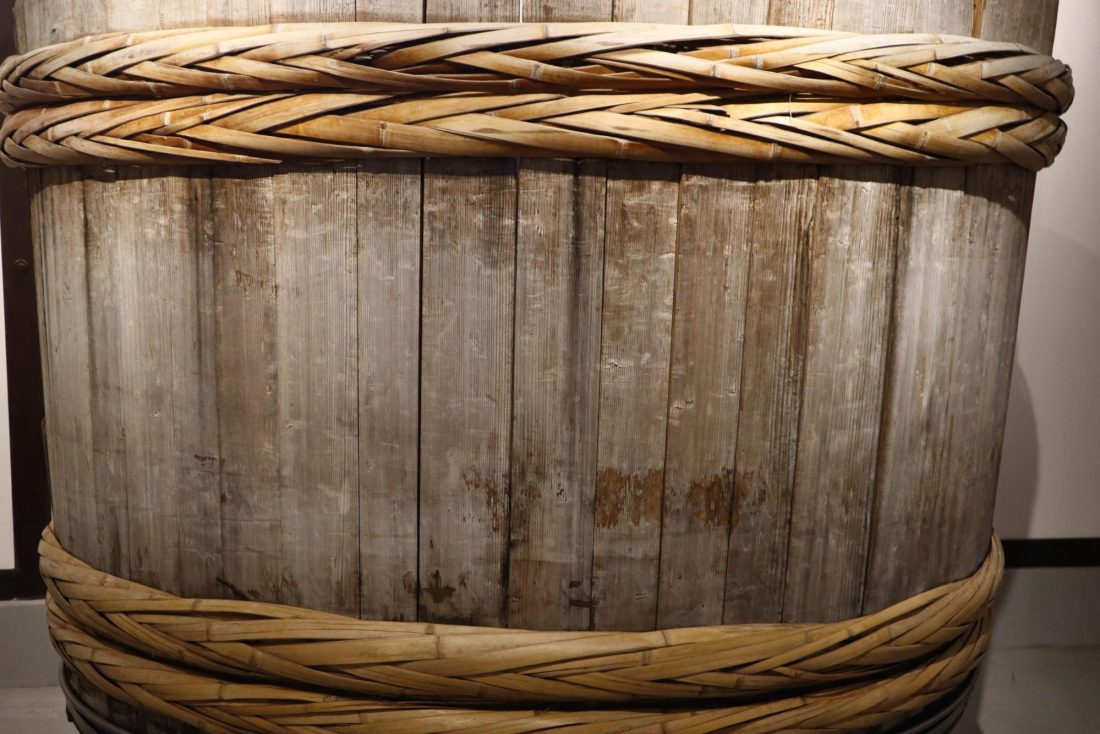
Drinking
Traditional sake is normally drank from a small sake decanter called a tokkuri (about 360ml) with a small, circular, porcelain cup that holds about 35ml, or a traditional,square, wooden-style vessel made from cedar and called a masu. Some may drink out of a basic, small glass or even a wine glass. Although any style glass would be appropriate in most cases. As long as you can enjoy pure taste of the drink.
Sake served at various temperatures has a definite impact on the tastes. The temperatures are:
- 50 Celcius – Atsukan (very hot with dry taste).
- 45 Celcius – Jokan (hot with soft and crisp taste).
- 40 Celcius – Narukan (warm with rich and full taste).
- 20 Celcius – Shitsuon (cool with soft taste).
- 10 Celcius – Reishu (chilled).
Cool sake in the summer and hot sake in the winter could be used as basic rules of thumb; although some purists believe that heating sake erases some of the taste. Seasons, tastes, and foods will also have a bearing on what type of sake to drink – where, when, and with what.

Sake Etiquette and Taste
Sake is to be sipped and not gulped when drinking. Typically, sake is paired with various foods depending on the type you are drinking. Here are some examples:
- Fruity Sake: white fish or tempura.
- Light and smooth Sake: sashimi.
- Mature Sake: cheese, eel, or umami-rich, high protein foods.
- Full-bodied Sake: pork or chicken (yakitori).
A recommended way to drink sake is to have a glass of water on hand to sip in between drinks of sake; this can continually cleanse your palate to enhance the Sake taste, as well as prevent you from getting sick. This type of water is called yawaragimizu or (calm state of things water).
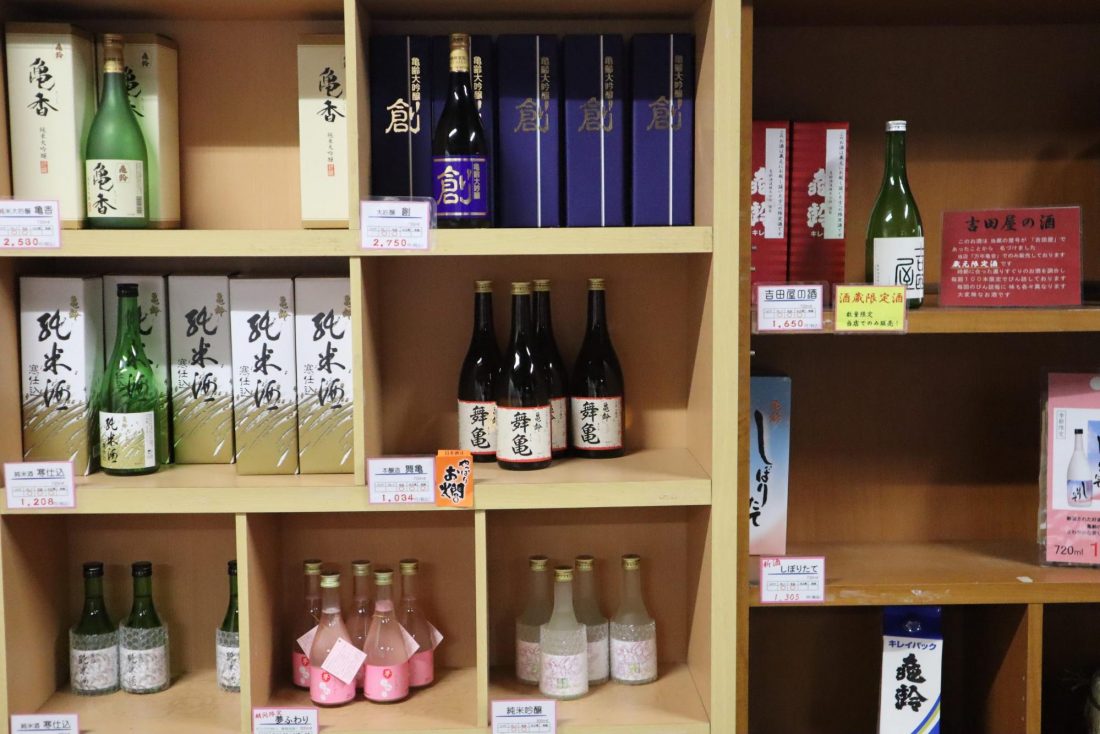
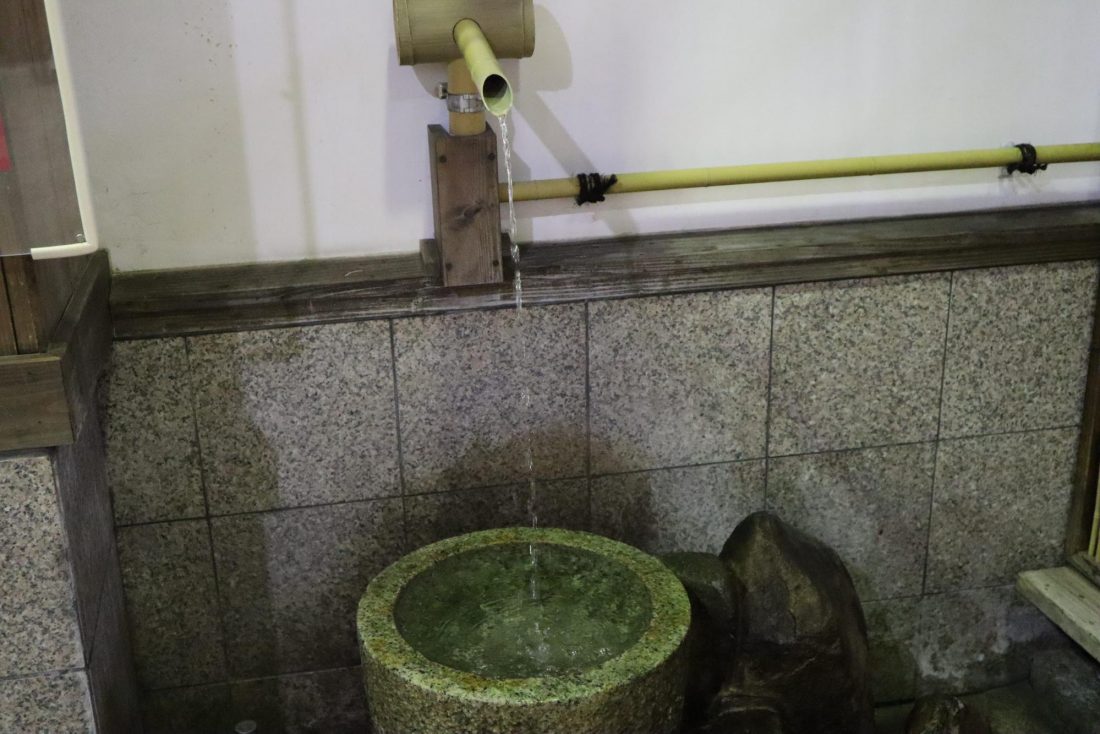
Final Thoughts
Saijo is a small, cultural gem located with the Hiroshima City limits. If you have any curiosity about the interesting and layered traditional world of sake, please consider a visit to the area. It should be worth your while. Whether you drink alcohol or not, this is one trip that will enhance your knowledge and emotions about a decidedly Japanese beverage that has whet the tastes of people around the world for centuries!
If you have further curiosity, I suggest going to The Japan Sake and Shochu Makers Association website at http://www.japansake.or.up/Sake/English





